Don't wanna be here? Send us removal request.
Text
Saul Bass
In regards to 'Bass Resonance' by John Caley, my overwhelming opinion of the essay is the readableness of it or lack thereof. I tried multiple times to read it through however the ridiculous metaphors and words I've never even heard of before made this next to impossible, on top of this it simply wasn't interesting. Overall I believe Caley is attempting to sum up the varied career of Saul Bass as well as highlight his most successful projects and go into greater detail regarding the schematics of the individual project and explain just why it works so well.
For my first title sequence, I chose the 1960 film 'Ocean's 11'. His title sequence has a rather minimalist style but follows the theme of Las Vegas where the film is set. The first part of the credits consists of neon digital numbers that fill the entirety of the screen slowly counting up to 11, some of the numbers feature credits for the main actors such as Frank Sinatra, the biggest name in the film.

The neon was used as it sets the tone of the film and immediately brings to mind the loud and outlandish look of Las Vegas, thus bringing the audience into the same mindset of the film. We then move onto iconic imagery from Las Vegas casinos, such as slot machines and gambling tables, all whilst continuing the neon dots throughout to create a cohesive sequence all whilst title cards are cleverly being fitted in throughout. I believe this sequence works so well as its the perfect introduction to the loud raucousness of Las Vegas and really sets the tone for this comedic heist film.


My second title sequence is that of 'North by Northwest' an Alfred Hitchcock film that centres around a case of mistaken identity. The title sequence begins with a geometric outline of a glass skyscraper which features the main credits for the film, the geometric then fades into the actual building itself with more credits featured. Once this section is over, a compilation of busy commuter areas is shown with text overlayed on top. One of the biggest reasons this fairly simple title sequence is hailed as revolutionary to Saul Bass is because of his use of transitional text. Instead of the credit simply appearing or being written, they slide up and down the screen from different directions and perspective, creating a unique imagery to the sequence.

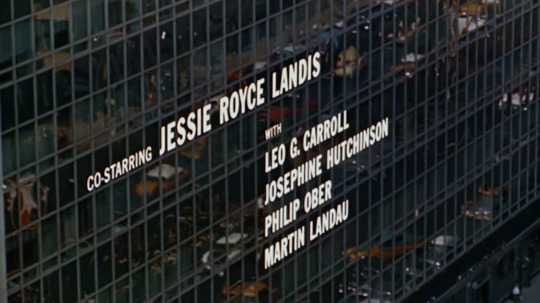

Finally, I chose to feature the 1995 film 'Casino'. It is completely different from my two previous examples thanks to its use of videography and having an opening scene. It truly starts when we see 'Aces' car explode with him inside, this explosion is where the credits begin. Once again this film is set in Las Vegas at a casino and therefore the imagery heavily relies upon this with the neon lights of Las Vegas being shown as well as the gambling machines themselves. The reason I believe this title sequence works so well is how dramatic it is, the repeated showing of a body flying through the air combined with the high contrast colours and operatic music really makes for an intense set of credits that easily sets the tone for the film.



1 note
·
View note
Text
A Response to The Art of Travel
'The Art of Travel' by Alain de Botton is a semi-autobiographical account of his experiences in places where travellers pass through, an example of this would be his in-depth description of a service station in the UK. He also reflects on the work of other artists such as the French poet Charles Baudelaire or the American painter Edward Hopper who focused on the same subject matter.
When considering the authors own experience and description of a service station in the UK, I have to disagree. He makes them seem like awful places with no personality and simply existing for the sake of it, I have been to some spectacular service stations, as odd as that sounds. Take for example the Westmorland station, with spectacular views of the lake district, an award-winning farm shop and a beautiful interior with a heavy focus on being eco-friendly, this family-owned service station is anything but generic. Ever since I was a young child my family has been making the nearly 5-hour drive from Newcastle to Anglesey and back, so I believe I am well versed in the places. There are always the mainstays to a service stop, a coffee shop, a place serving hot food, a mini market, gambling areas and some less than sterile bathrooms. Growing up we always looked forward to these stops, we got to run around and release some energy, we always managed to get our mum to buy us some sweets for the journey and it broke up the repetitiveness of the drive, for those reasons I have it ingrained in me to look forward to service stops.

In my personal opinion, I found the writer had a very dire outlook on travelling, whilst he found the prospect exciting the actual execution he made to seem very lonely. His examples had similar opinions on the matter, Baudelaire went travelling to India however turned around before even arriving after not being able to shake 'a feeling of lethargy and sadness'. Every year Hopper spent 7 months driving around America sketching and painting, yet nearly all of his pieces featured people alone looking melancholy or vulnerable. My own experiences were far from this, I spent two weeks travelling by myself and I rarely felt lonely or nervous as I never had the chance. On my very first day a group of strangers invited me to go on a hike and visit an aeroplane graveyard with them, by taking the risk and joining them I instantly made friends. Of course everyone feels differently, however I believe that the main influence in peoples journeys are their own attitudes and they very well may be the thing holding them back.

Whilst I found the extract to be somewhat interesting in general, I just felt sorry for these people who were quite clearly in the captivity of negativity. I truly think a positive mental attitude makes all the difference and as I grow older I am so thankful that my parents gave me the confidence to travel and be by myself.
de Botton, A. (2002). The Art of Travel. London: Penguin, pp.28-60.
0 notes
Photo
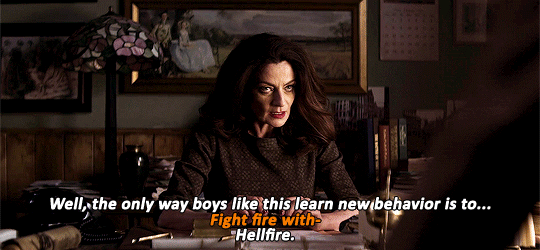

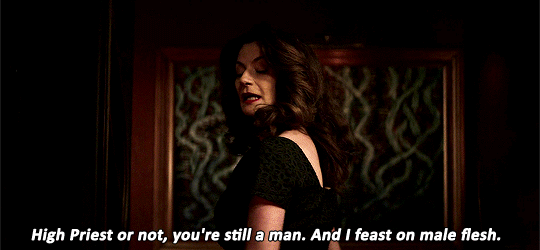
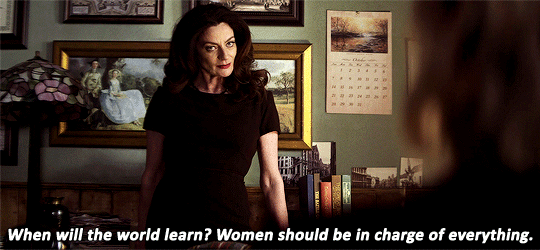
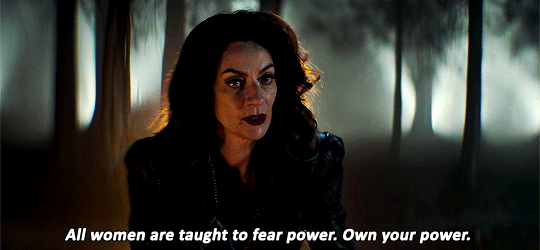
Michelle Gomez as Mary Wardwell in Chilling Adventures of Sabrina (2018-)
13K notes
·
View notes
Text
Michael Allen Fox’s ‘The Many Faces of Home’
In Michael Allen Fox’s book ‘Home: A Very Short Introduction’ he begins by getting the reader to truly visualise what our idea and concept of home is and push through the immediate connotations of mundane things like the style and facade of a building, instead focusing on why exactly home is so incredibly important to people. Every single person has a place they consider to be home, even when they don’t know in particular where that is. Fox goes on to talk of Odysseus experiencing home sickness after defeating a cyclops, whilst next to none of us can relate to his heroics ‘we do not find it difficult to identify with his embrace of home … even many centuries later’.
When defining the word ‘home’ Oxford dictionary provides us with ‘a house, apartment, or other shelter that is the usual residence of a person, family or household.’ Fox however, theorises that home is simply in the mind of the beholder as it is classed as something completely different to every person. To further prove his point, I asked every member of my household where they consider home to be and I got three different answers, yet we all live in the same home together. As Fox puts it ‘any attempt to define home merely by invoking a brief formula will fail to do justice to our subject’.
Many people associate different emotions when considering their home, I think of comfort, warmth, love and safety yet others may have experienced something entirely different, home is something very personal to each individual. Our emotions are also ever changing, whilst I feel that way now, only two weeks ago I could have quite happily never gone back. Fox doesn’t allow you to stay submerged in your own thoughts however, he quickly reminds you of the fact that homelessness is still prevalent in many countries and the idea of home is just a distant memory. He quickly moves on to the idea of home towns, and how peoples identity can be engrained in where they were born and raised. Where you were brought up can quite easily dictate someones whole life, if I had stayed in the UK I would probably still be in high school now instead of at university. Fox concludes with a poignant statement with I believe summarises the whole chapter incredibly well, so I shall also finish on it. In all honesty, I found this first chapter to be captivating and incredibly true, it invoked so many emotions and questions that in all honesty I wanted to skip doing a summary and instead write a response. This is truly the sign of a good writer and I could easily continue on and devour the full book.
‘Home, for all its multi-faceted, problematic notions, and for many, is an almost undefinable thing, a je ne sais quoi’
Fox, M. (2016). Home: A Very Short Introduction. Oxford, Chapter 1.
0 notes
Text
Modernism
In a recent trip to the Dubai Design District we were required to photograph 5 examples of modernisms effect on furniture. Here is some examples of my findings.

This item was an odd piece of furniture in which you slide down on until you're sitting on the floor with your back supported at a reclining angle. I particularly liked this object for its internal laser cut design which looked like a separate piece of art in itself.

This series of three benches was so reflective and eye catching, we simply had to photograph it, I love the use of colour and the different angles used in the beaches through layering to create dimension.

The above photograph is a bike shelter/stand. Whilst I do believe it to be a practical bike stand, it provides no protection from the elements due to it being made of slats, this would not be effective against the elements such as rain, wind or even sunshine. However I do love the organic curving shape of the structure and think it is indeed a beautiful item.

This set of table and chairs is both beautiful and almost practical. The main solid structure is made from recycled elements compacted together and the painted, however the surfaces, such as the table top and seats, are a smooth material that would be comfortable and provide a comfortable covering.

This final photograph is off a seat, it is entirely circular however it Is thicker at the bottom to provide a more stable resting place. The chair itself is both comfortable and comforting with its swaying motion and all in all is a very pleasant place to be seated. However the seat is massive and would only be practical in public places.
1 note
·
View note
Text
Milton Glaser
Whilst I only covered two pieces of Glaser's work, I have written about the two that have the greatest meaning to people. Glaser himself is a New Yorker born and raised, he has started multiple design companies which have been highly influential within the graphic design world and have guided countless other trends.
The very first time I saw a Milton Glaser artwork was on a Bob Dylan poster, my Taid has always been a huge fan of Dylan and has collected memorabilia, books, artwork and album for as long as I can remember. I had no idea that this simple yet beautiful poster was graphic design, I was a small girl who thought something looked pretty. The way the hair is portrayed has so much symbolism behind it, the groovy bright colours to represent the psychedelic movement gaining popularity at the time, whilst also clearly showing Dylans iconic curly mess of hair. Nowadays we instantly associate the colour choice used with the 60s era proving just how iconic his work is. This work has so much sentimental value to me and my family, which may be the reason why I love the poster so much, however I believe it to be the simplicity and the contrast between the black side profile of his face which holds so much depth compared to the free-spirited colourfulness of his hair. You only have to listen to one of Bob Dylans songs to see how closely related the songs are to the art.
Yet this is not the only time I have come across Glaser without even knowing it, one of the most recognizable symbols to people, more specifically tourists, worldwide is the I Love NY logo. In 1977, New York needed a major rebranding. Instead of being known as the tourist hub it is today, it was viewed by many as the crime capital of America with gang violence rife on the streets. Glaser agreed to design a logo for the New York state for free, and in the back of a taxi on an old piece of scrap paper, Glaser created what may be one of the most iconic logos in the world. I personally believe the simplicity and beauty behind it, is what makes his work so appealing and beautiful to people worldwide.

Glaser, M. (N/A) Milton: Interminable Length [Web] Available From: https://www.miltonglaser.com/milton/
MoMA. (1966) Milton Glaser - Dylan. [Web] Available From: https://www.moma.org/collection/works/8108
Shank, I. (2017) How Milton Glaser's Iconic Logo Made the World Love New York Again [Article] Available From: https://www.artsy.net/article/artsy-editorial-logo-made-love-new-york




0 notes
Text
My street.
I live in a tiny oasis in the centre of the city, it is only a 15 minute walk to university (well it used to be - currently the entire pavement has been destroyed making it un-walkable to the average pedestrian) and to the nearest metro station. Being in the centre of the city, it is highly irregular to quaint bungalows, masses of greenery and a strong community spirit. Whilst the we are surrounded by all things new and shiny, we slowly crumble away, cracks forming in walls and speedbumps, power outages and plumbing problems a regular occurrence. Yet we choose to stay for the feeling of home. I know these paths well, I walk them everyday with my dogs and find new quirks and oddities with every passing, a new pot hole, crack in the wall, stray cat, barking dog, crying child. Everything here is familiar, yet as soon as I look up things change, the new hotel by my house rapidly being finished in time for Christmas, the roads leading to the compound a construction site creating new routes, and office buildings are springing up overnight. Dubai is in a constant state of change, demolishing the old and building up the new.

















2 notes
·
View notes
Text
Being a Flâneuse
Lauren Elkins, an American author and academic based in Paris, regularly writes about France and its ongoings, translations of notable French text as well as historical women of value. Her feminist historical text interspersed with elements of an autobiography 'Flâneuse: Women Walk the City' is right on theme. Whilst analyzing an extract from the beginning of the book, explaining the word 'Flâneur' - one who wonders aimlessly, and the many sexist connotations that come it.
When reading this chatty extract I felt overwhelmed by the amount of information unloaded onto me in a short period of time, outraged by the blatant sexism of men and the word 'flâneur' itself and inspired by the women who rebelled from the expectations of the day such as Even Woolf. One of the most interesting aspects of the extract is the word in relation to women. 'Flâneuse' the female form of 'flâneur' has an entirely different definition, a lounge chair. There is no feminine version of the word 'flâneur'. This is because men did not believe women could or were even capable of wandering aimlessly and observing the world around them as they did not believe women could blend in instead, women were something to be objectified and marvelled at. The essence of the extract as a whole is aiming to persuade people to wander and explore with no set purpose, simply for the love of observing and pondering different questions, something that in this modern day and age where everything we do is goal orientated, seems to be sorely lacking.
Connecting this passage back to the theme of the week, streets and more specifically geo-scaping, the connection is easy to make. I believe this extract has given me a new perspective on the world around me. At this time of year in Dubai, the only time I walk is to get to college or the metro and even then it is a direct predetermined route I rarely stray from. There are a few reasons for this, for example the unpleasant heat this country experiences or the lack of pedestrian-friendly streets in my area. There are only a few places in which one could 'flâneuse' in this country and most of them are shiny and new with little to no history or quirks surrounding them, thus making some of the main principles of the hobby obsolete.
To conclude, I believe this extract to be a highly engaging read, quickly sucking you in and creating the sense of familiarity with the author and the subject matter. I also believe that being a female gave me an even more personal connection to the extract and has truly changed my view on the act of wandering. As a society, girls are still brought up to think that even the simple act of walking can be a dangerous one, this sampling rebuffs this opinion and calls into question the sexist connotations of it. I would highly recommend this book 'Flâneuse: Women Walk the City' to my fellow classmates, but more specifically to other females both young and old.
‘A woman, visible against the wall behind her, in a field of proscriptions and defiances, about to light up a cigarette. She stand out in her anonymous, immortal singularity.’
Flanuese: Women Walk the Streets (2016) Lauren Elkin [Book] UK: Chatto & Windus and Farrar

The Megaro Hotel, Kings Cross London.
2 notes
·
View notes



